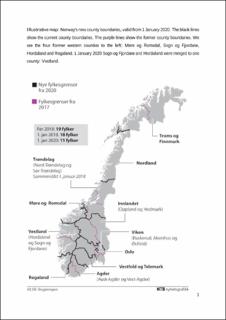| dc.contributor.author | Helset, Stig Jarle | |
| dc.date.accessioned | 2023-12-13T21:29:46Z | |
| dc.date.available | 2023-12-13T21:29:46Z | |
| dc.date.created | 2022-01-02T09:55:47Z | |
| dc.date.issued | 2021 | |
| dc.identifier.citation | Linguistic Minorities in Europe Online (LME). 2021, 2 . | en_US |
| dc.identifier.uri | https://hdl.handle.net/11250/3107441 | |
| dc.description.abstract | Norwegian has two written standards, Bokmål and Nynorsk, and according to Norwegian subject curriculum all children and adolescents should learn to read and write both Bokmål and Nynorsk. This article discusses in what ways deviations from the written standard among youth with Nynorsk as their primary language form can be explained on the basis of the sociolinguistic situation in which they live. To explore this question, the author has conducted a study on self-reported language attitudes, language skills and language choices in different hypothetical language situations among 13-16-year-old students living in the core area of Nynorsk in Western Norway, and another study on actual writing skills in Nynorsk among a selection of the same respondents. The results from the studies indicate that there is a close connection between the multilingual situation and influence from Bokmål and dialect in formal Nynorsk writing. | en_US |
| dc.language.iso | eng | en_US |
| dc.title | Norm competence among multilingual youths in Western Norway | en_US |
| dc.title.alternative | Norm competence among multilingual youths in Western Norway | en_US |
| dc.type | Peer reviewed | en_US |
| dc.type | Journal article | en_US |
| dc.description.version | acceptedVersion | en_US |
| dc.source.pagenumber | 36 | en_US |
| dc.source.volume | 2 | en_US |
| dc.source.journal | Linguistic Minorities in Europe Online (LME) | en_US |
| dc.identifier.doi | 10.1515/lme.14813238 | |
| dc.identifier.cristin | 1973312 | |
| cristin.ispublished | true | |
| cristin.fulltext | postprint | |
| cristin.qualitycode | 1 | |

